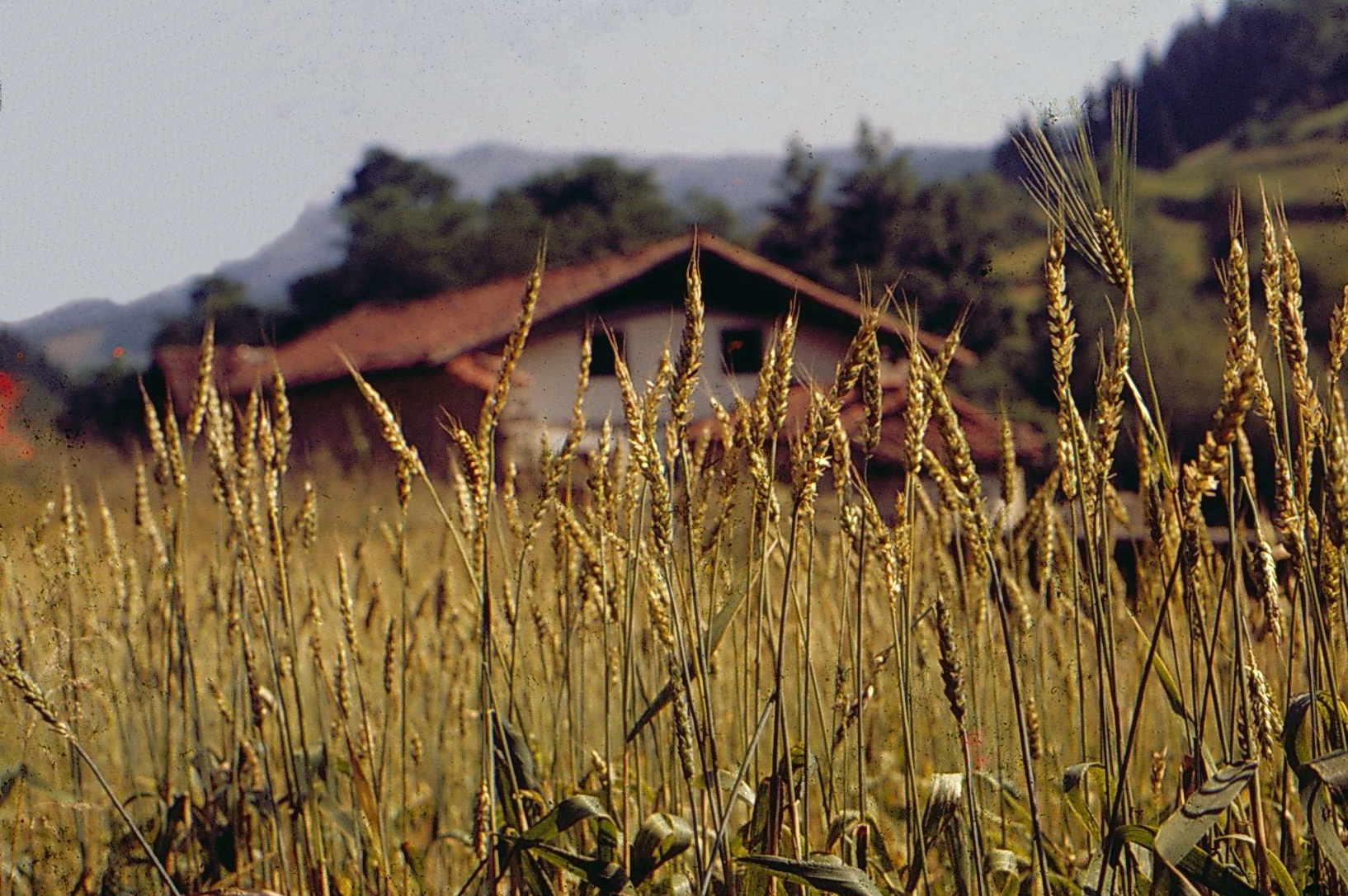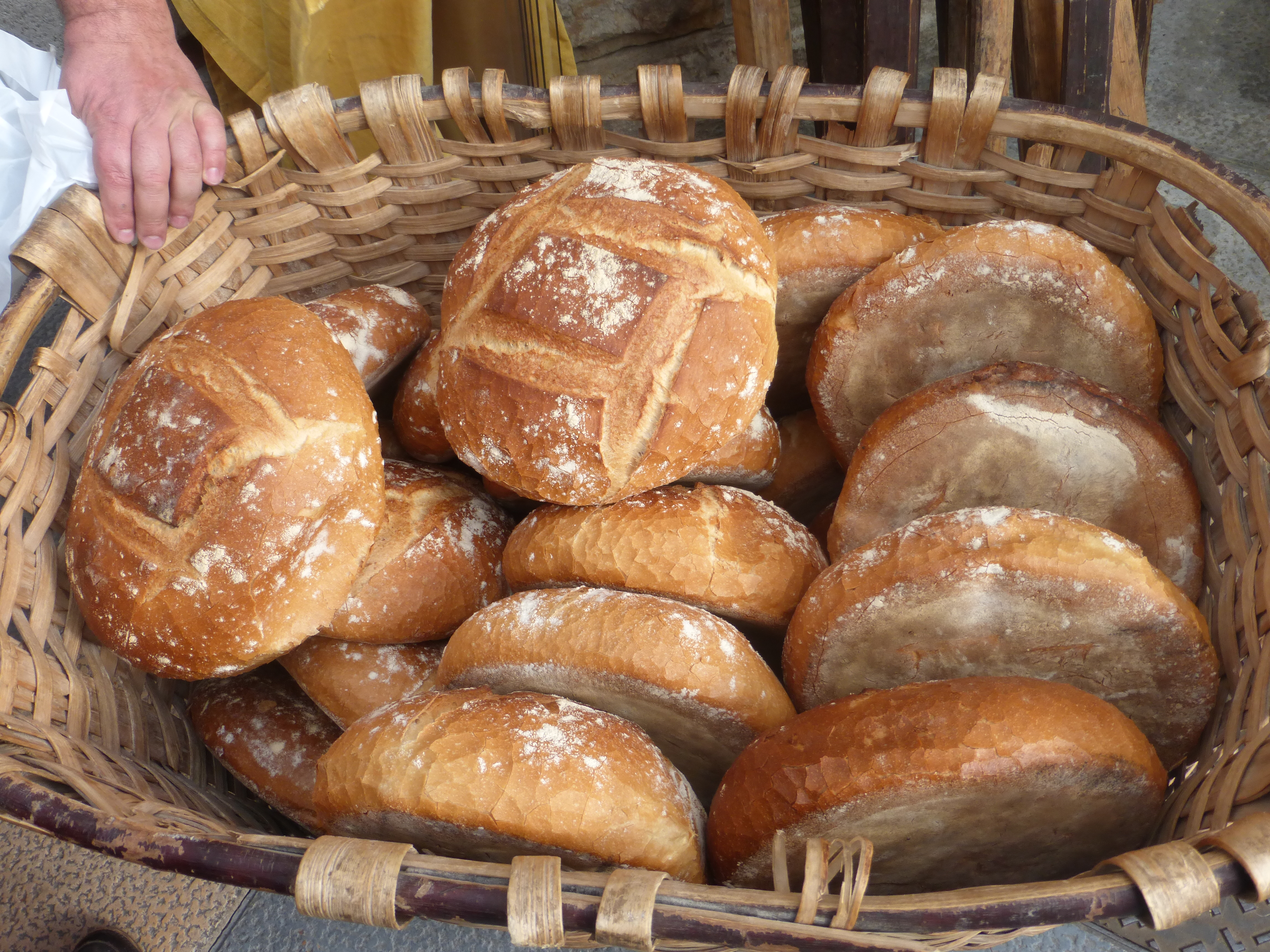Basque ethnography at a glance

Wheat field in Zeanuri (Bizkaia), 1981. Ander Manterola.
Now we are used to having bread any time, any day, anywhere, but it was not always so.
Before the 1950s, when wheat was still cultivated in our fields, the entire seed-to-loaf bread-making process was long and arduous. Every July during threshing the best grain was saved for seed. Wheat seeds were soaked (beratu) in water and later mixed with lime to get rid of rust (ludoia). They were kept in lime for three to four days before storing them in the loft.
Wheat was sown in November, after the maize harvest, and following wheat, turnip would be grown. Once the land was ploughed, first the harrow (eztoa) and then the roller (alperra) were dragged over it to break up clods (mokilak) and flatten the soil. The yearly wheat seeds were broadcast using wooden markers (zumitzak) to help scatter them evenly on the soil. Weeding was done in spring by hand (esku-urtigian) and generally by female farmers.
The wheat crop was harvested in July by cutting the stalks with a sickle (zerrea). These were tied into sheaves (azaoak) using cut stalks as ties and helped by a wooden prong (urkulua), their heads oriented in the direction of the bundle. The sheaves were stood up in stooks (txondorrak) and left to dry for a couple of days. Eventually they were hauled in an ox-drawn cart and three or four stacks (gari-metak) made with them on the farm.

Batch of bread. Mungia (Bizkaia), 2015. Akaitze Kamiruaga. Labayru Fundazioa Photographic Archive.
Threshing time came next. In the old days wheat was threshed manually by beating the stalks on sandstone slabs (hareharriak); threshing machines (gari-joteko makinak) arrived later. Then grain was winnowed from chaff (galautsa) on a shallow basket with two handles designed for it (arpana). Winnowing machines were subsequently developed.
Young boys and girls would take the grain to the loft for storage and deliberately stumble (estropezau) on the way to lightly touch each other. As needed, the sacs of grain were carried on the shoulder (lepoz), later on by donkey, to the mill to be ground to flour (eihoteko). The precious wheat flour would be kneaded with yeast into dough, bushes of gorse (otea) burned to fuel the wood-fired oven… But let us leave bread making and baking for a future post.
Segundo Oar-Arteta – Etniker Bizkaia – Etniker Euskalerria Groups
Translated by Jaione Bilbao – Ethnography Department – Labayru Fundazioa
All of the above is data gathered by the author to Ángel Valencia, native to Gautegiz Arteaga (Bizkaia).
References for further information: Family Diet and Agriculture, both part of the Ethnographic Atlas of the Basque Country collection.


[…] a previous post, published on 20 July 2018, we began to tell the story of bread and shall now pick up where we left […]